Milwaukee M12 FUEL 2409-22 Handleiding
Milwaukee
Niet gecategoriseerd
M12 FUEL 2409-22
Bekijk gratis de handleiding van Milwaukee M12 FUEL 2409-22 (20 pagina’s), behorend tot de categorie Niet gecategoriseerd. Deze gids werd als nuttig beoordeeld door 83 mensen en kreeg gemiddeld 4.9 sterren uit 42 reviews. Heb je een vraag over Milwaukee M12 FUEL 2409-22 of wil je andere gebruikers van dit product iets vragen? Stel een vraag
Pagina 1/20

Cat. No. / No de cat.
2409-20
M12 FUEL™ LOW SPEED TIRE BUFFER
TAMPON DE PNEUS BASSE VITESSE M12 FUEL™
RASPADOR DE NEUMÁTICOS DE BAJA VELOCIDAD M12 FUEL™
OPERATOR'S MANUAL
MANUEL de L'UTILISATEUR
MANUAL del OPERADOR
WARNING To reduce the risk of injury, user must read and understand operator's manual.
AVERTISSEMENT An de réduire le risque de blessures, l'utilisateur doit lire et bien
comprendre le manuel.
ADVERTENCIA Para reducir el riesgo de lesiones, el usuario debe leer y entender el manual.
WARNING To reduce the risk of injury, user must read and understand operator's manual.
AVERTISSEMENT An de réduire le risque de blessures, l'utilisateur doit lire et bien
comprendre le manuel.
ADVERTENCIA Para reducir el riesgo de lesiones, el usuario debe leer y entender el manual.

2
GENERAL POWER TOOL
SAFETY WARNINGS
WARNING
Read all safety warnings, instruc-
tions, illustrations and specica-
tions provided with this power tool. Failure to
follow all instructions listed below may result in
electric shock, re and/or serious injury. Save all
warnings and instructions for future reference.
The term "power tool" in the warnings refers to your
mains-operated (corded) power tool or battery-oper-
ated (cordless) power tool.
WORK AREA SAFETY
• Keep work area clean and well lit. Cluttered or
dark areas invite accidents.
• Do not operate power tools in explosive atmo-
spheres, such as in the presence of ammable
liquids, gases or dust. Power tools create sparks
which may ignite the dust or fumes.
• Keep children and bystanders away while operating
a power tool. Distractions can cause you to lose control.
ELECTRICAL SAFETY
• Power tool plugs must match the outlet. Never
modify the plug in any way. Do not use any
adapter plugs with earthed (grounded) power
tools. Unmodied plugs and matching outlets will
reduce risk of electric shock.
• Avoid body contact with earthed or grounded
surfaces, such as pipes, radiators, ranges and
refrigerators. There is an increased risk of electric
shock if your body is earthed or grounded.
• Do not expose power tools to rain or wet condi-
tions. Water entering a power tool will increase the
risk of electric shock.
• Do not abuse the cord. Never use the cord for
carrying, pulling or unplugging the power tool.
Keep cord away from heat, oil, sharp edges or
moving parts. Damaged or entangled cords increase
the risk of electric shock.
• When operating a power tool outdoors, use an ex-
tension cord suitable for outdoor use. Use of a cord
suitable for outdoor use reduces the risk of electric shock.
• If operating a power tool in a damp location is
unavoidable, use a ground fault circuit interrupter
(GFCI) protected supply. Use of an GFCI reduces
the risk of electric shock.
PERSONAL SAFETY
• Stay alert, watch what you are doing and use
common sense when operating a power tool. Do
not use a power tool while you are tired or under
the inuence of drugs, alcohol or medication. A
moment of inattention while operating power tools
may result in serious personal injury.
• Use personal protective equipment. Always
wear eye protection. Protective equipment such
as a dust mask, non-skid safety shoes, hard hat or
hearing protection used for appropriate conditions
will reduce personal injuries.
• Prevent unintentional starting. Ensure the switch
is in the o-position before connecting to power
source and/or battery pack, picking up or carrying
the tool. Carrying power tools with your nger on
the switch or energizing power tools that have the
switch on invites accidents.
• Remove any adjusting key or wrench before
turning the power tool on. A wrench or a key left
attached to a rotating part of the power tool may
result in personal injury.
• Do not overreach. Keep proper footing and
balance at all times. This enables better control
of the power tool in unexpected situations.
• Dress properly. Do not wear loose clothing or
jewelry. Keep your hair and clothing away from
moving parts. Loose clothes, jewelry or long hair
can be caught in moving parts.
• If devices are provided for the connection of
dust extraction and collection facilities, ensure
these are connected and properly used. Use of
dust collection can reduce dust-related hazards.
• Do not let familiarity gained from frequent use
of tools allow you to become complacent and
ignore tool safety principles. A careless action can
cause severe injury within a fraction of a second.
POWER TOOL USE AND CARE
• Do not force the power tool. Use the correct power
tool for your application. The correct power tool
will do the job better and safer at the rate for which
it was designed.
• Do not use the power tool if the switch does not turn
it on and o. Any power tool that cannot be controlled
with the switch is dangerous and must be repaired.
• Disconnect the plug from the power source and/
or remove the battery pack, if detachable, from
the power tool before making any adjustments,
changing accessories, or storing power tools.
Such preventive safety measures reduce the risk of
starting the power tool accidentally.
• Store idle power tools out of the reach of children
and do not allow persons unfamiliar with the
power tool or these instructions to operate the
power tool. Power tools are dangerous in the hands
of untrained users.
• Maintain power tools and accessories. Check
for misalignment or binding of moving parts,
breakage of parts and any other condition that
may aect the power tool’s operation. If damaged,
have the power tool repaired before use. Many ac-
cidents are caused by poorly maintained power tools.
• Keep cutting tools sharp and clean. Properly
maintained cutting tools with sharp cutting edges
are less likely to bind and are easier to control.
• Use the power tool, accessories and tool bits
etc. in accordance with these instructions,
taking into account the working conditions and
the work to be performed. Use of the power tool
for operations dierent from those intended could
result in a hazardous situation.
• Keep handles and grasping surfaces dry, clean
and free from oil and grease. Slippery handles and
grasping surfaces do not allow for safe handling and
control of the tool in unexpected situations.
BATTERY TOOL USE AND CARE
• Recharge only with the charger specied by the
manufacturer. A charger that is suitable for one type
of battery pack may create a risk of re when used
with another battery pack.
• Use power tools only with specically designated
battery packs. Use of any other battery packs may
create a risk of injury and re.
• When battery pack is not in use, keep it away
from other metal objects, like paper clips, coins,
keys, nails, screws or other small metal objects,
that can make a connection from one terminal
to another. Shorting the battery terminals together
may cause burns or a re.

3
• Under abusive conditions, liquid may be ejected
from the battery; avoid contact. If contact acciden-
tally occurs, ush with water. If liquid contacts
eyes, additionally seek medical help. Liquid
ejected from the battery may cause irritation or burns.
• Do not use a battery pack or tool that is dam-
aged or modied. Damaged or modied batteries
may exhibit unpredictable behavior resulting in re,
explosion or risk of injury.
• Do not expose a battery pack or tool to re or
excessive temperature. Exposure to re or tem-
perature above 265°F (130°C) may cause explosion.
• Follow all charging instructions and do not charge
the battery pack or tool outside the temperature
range specied in the instructions. Charging im-
properly or at temperatures outside the specied range
may damage the battery and increase the risk of re.
SERVICE
• Have your power tool serviced by a qualied
repair person using only identical replacement
parts. This will ensure that the safety of the power
tool is maintained.
• Never service damaged battery packs. Service
of battery packs should only be performed by the
manufacturer or authorized service providers.
SPECIFIC SAFETY RULES FOR
TIRE BUFFER
Safety Warnings Common for Grinding, Sanding,
or Polishing Operations:
• This power tool is intended to function as a
grinder, sander, or polisher tool. Read all safety
warnings, instructions, illustrations and speci-
cations provided with this power tool. Failure
to follow all instructions listed below may result in
electric shock, re and/or serious injury.
• Operations such as wire brushing or cutting-o
are not recommended to be performed with this
power tool. Operations for which the power tool
was not designed may create a hazard and cause
personal injury.
• Do not use accessories which are not specically
designed and recommended by the tool manufac-
turer. Just because the accessory can be attached
to your power tool, it does not assure safe operation.
• The rated speed of the grinding accessories must
be at least equal to the maximum speed marked
on the power tool. Grinding accessories running
faster than their rated speed can break and y apart.
• The outside diameter and the thickness of your
accessory must be within the capacity rating
of your power tool. Incorrectly sized accessories
cannot be adequately controlled.
• The arbour size of wheels, sanding drum or any
other accessory must properly t the spindle or
collet of the power tool. Accessories that do not
match the mounting hardware of the power tool will
run out of balance, vibrate excessively and may
cause loss of control.
•Mandrel mounted wheels, sanding drums, cut-
ters or other accessories must be fully inserted
into the collet or chuck. If the mandrel is insu-
ciently held and/or the overhang of the wheel is too
long, the mounted wheel may become loose and be
ejected at high velocity.
• Do not use a damaged accessory. Before each
use inspect the accessory such as abrasive
wheels for chips and cracks, sanding drum for
cracks, tear or excess wear. If power tool or ac-
cessory is dropped, inspect for damage or install
an undamaged accessory. After inspecting and
installing an accessory, position yourself and
bystanders away from the plane of the rotating
accessory and run the power tool at maximum
no-load speed for one minute. Damaged acces-
sories will normally break apart during this test time.
• Wear personal protective equipment. Depending
on application, use face shield, safety goggles or
safety glasses. As appropriate, wear dust mask,
hearing protectors, gloves and workshop apron
capable of stopping small abrasive or workpiece
fragments. The eye protection must be capable of
stopping ying debris generated by various opera-
tions. The dust mask or respirator must be capable
of ltrating particles generated by your operation.
Prolonged exposure to high intensity noise may
cause hearing loss.
• Keep bystanders a safe distance away from work
area. Anyone entering the work area must wear
personal protective equipment. Fragments of
workpiece or of a broken accessory may y away and
cause injury beyond immediate area of operation.
• Hold power tool by insulated gripping surfaces
only, when performing an operation where the
cutting accessory may contact hidden wiring.
Cutting accessory contacting a "live" wire may make
exposed metal parts of the power tool "live" and
could give the operator an electric shock.
• Always hold the tool rmly in your hand(s) during
the start-up. The reaction torque of the motor, as it
accelerates to full speed, can cause the tool to twist.
• Use clamps to support workpiece whenever
practical. Never hold a small workpiece in one
hand and the tool in the other hand while in use.
Clamping a small workpiece allows you to use your
hand(s) to control the tool. Round material such as
dowel rods, pipes or tubing have a tendency to roll
while being cut, and may cause the bit to bind or
jump toward you.
• Never lay the power tool down until the acces-
sory has come to a complete stop. The spinning
accessory may grab the surface and pull the power
tool out of your control.
• After changing the bits or making any adjust-
ments, make sure the collet nut, chuck or any
other adjustment devices are securely tightened.
Loose adjustment devices can unexpectedly shift,
causing loss of control, loose rotating components
will be violently thrown.
• Do not run the power tool while carrying it at
your side. Accidental contact with the spinning
accessory could snag your clothing, pulling the ac-
cessory into your body.
• Regularly clean the power tool’s air vents. The
motor’s fan will draw the dust inside the housing
and excessive accumulation of powdered metal
may cause electrical hazards.
• Do not operate the power tool near ammable
materials. Sparks could ignite these materials.
• Do not use accessories that require liquid cool-
ants. Using water or other liquid coolants may result
in electrocution or shock.
Product specificaties
| Merk: | Milwaukee |
| Categorie: | Niet gecategoriseerd |
| Model: | M12 FUEL 2409-22 |
Heb je hulp nodig?
Als je hulp nodig hebt met Milwaukee M12 FUEL 2409-22 stel dan hieronder een vraag en andere gebruikers zullen je antwoorden
Handleiding Niet gecategoriseerd Milwaukee

15 September 2025
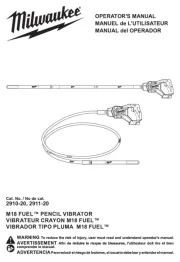
1 September 2025
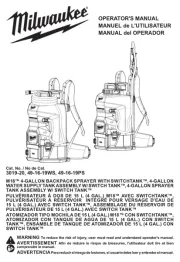
1 September 2025
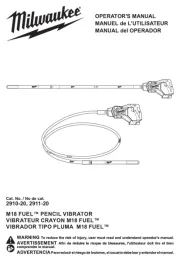
1 September 2025
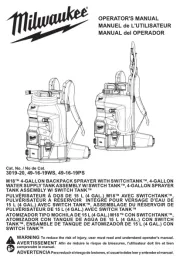
1 September 2025
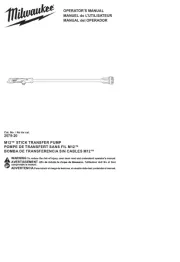
19 Augustus 2025
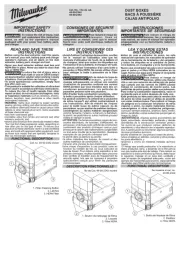
19 Augustus 2025
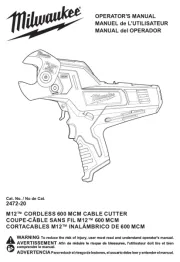
19 Augustus 2025

18 Augustus 2025

18 Augustus 2025
Handleiding Niet gecategoriseerd
- Momo Design
- Metrix
- HomeSpot
- Cobra
- Milesight
- Audient
- Olivetti
- UPM
- Prestige
- Manhattan
- SLV
- Dinstar
- SecureSafe
- Urban Glide
- TK Audio
Nieuwste handleidingen voor Niet gecategoriseerd
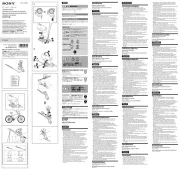
16 September 2025
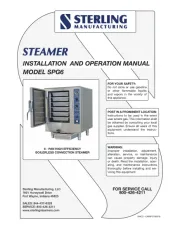
16 September 2025
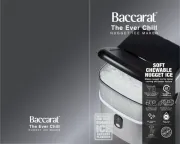
16 September 2025
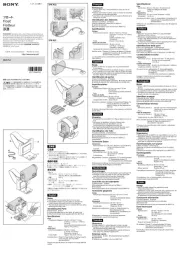
16 September 2025
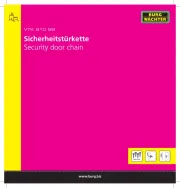
16 September 2025
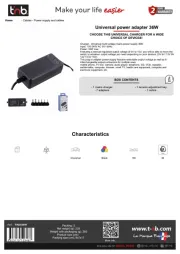
16 September 2025
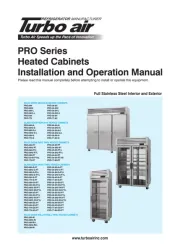
16 September 2025
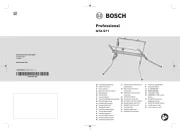
16 September 2025
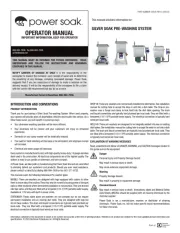
16 September 2025
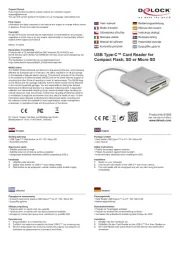
16 September 2025